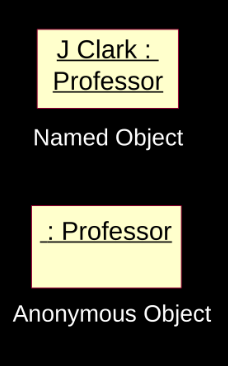an object repersents an entity, either physical, conceptual or software
an object has state
an object has behavior
an object has identity
basic principles of object orientation:
abstraction
encapsulation(封装)
modularity(模块化)
hierarchy(等级制)
an object is represented as a rectangle with an underlined name
just like this

a class is represented using a rectangle with three compartments:
the class name
the structure(attributes)
the behavior(operations)

attributes


operations:

polymorphism(多态)
generalization
package:
organize elements into groups
diagram depiction






规格说明:
元素的特征和语义的文本描述
修饰:
建模元素暴露的信息项以表现某个要点
公共分类:
类元:classifier 和 实例
扩展机制:
约束:形式:{约束条件}
构造型(stereotypes):基于已有的建模元素引入新的建模元素
标记值:形式:{属性名=值}

构架(architecture)
